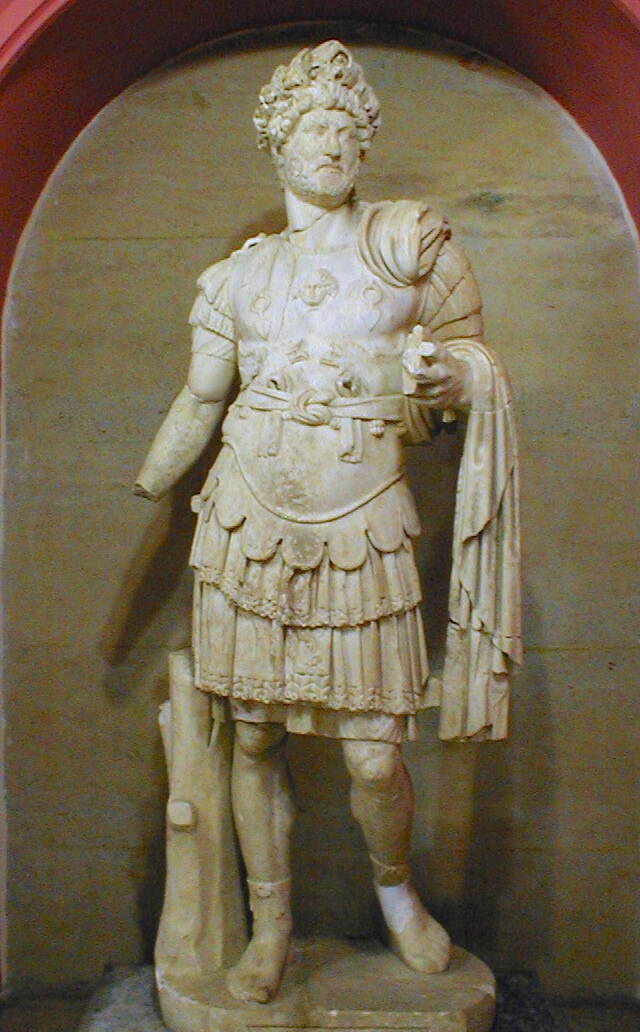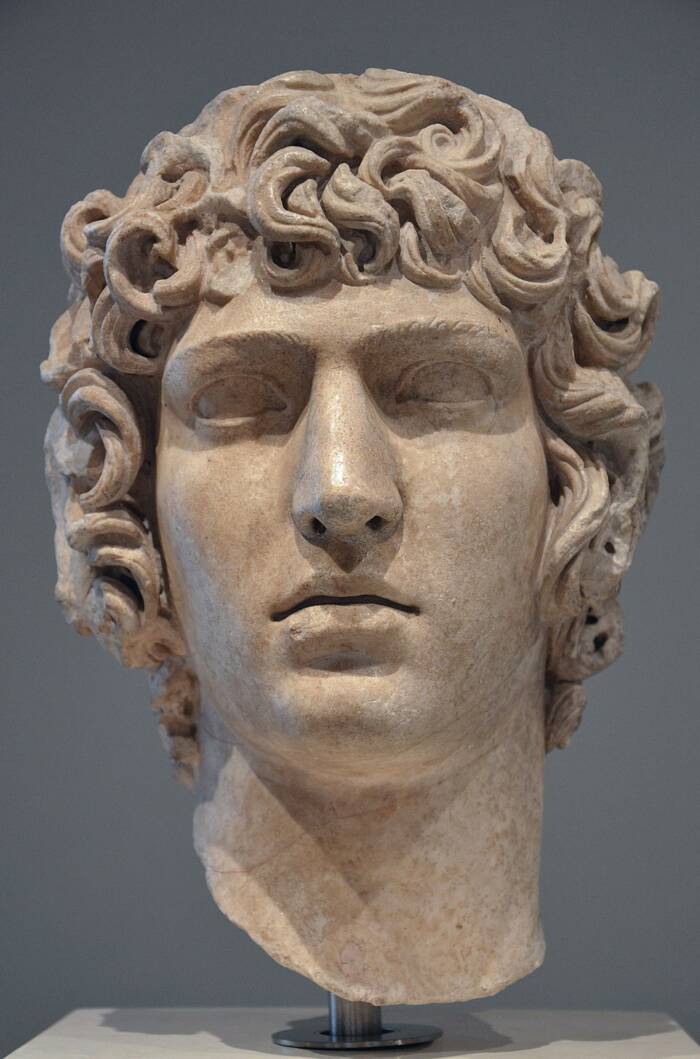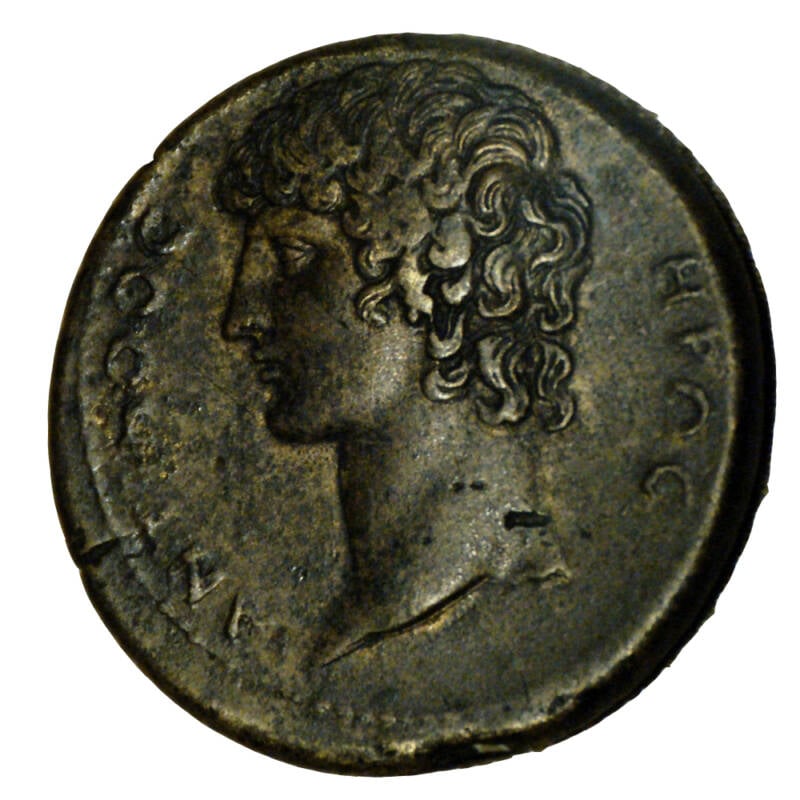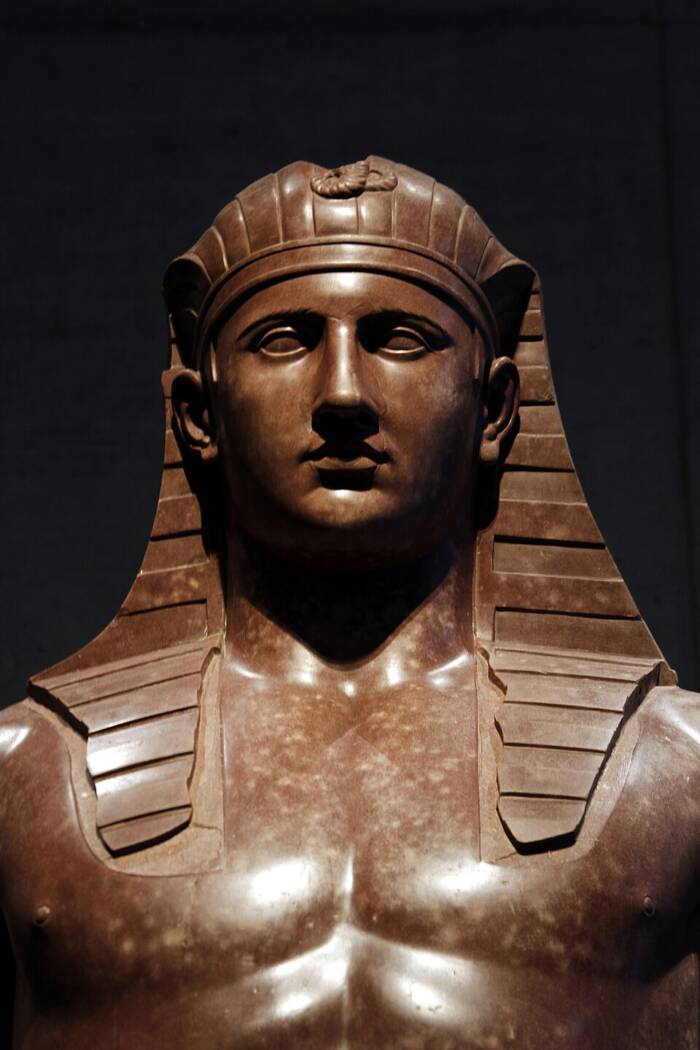Antinous was just 19 years old when he drowned in the Nile under suspicious circumstances, and his untimely demise led to him being widely worshipped as a god.
Public DomainA statue of Antinous at the Vatican Museums.
In the ancient world, more than 2,000 statues were built to honor a young man named Antinous. He had been born in a far-flung corner of the Roman Empire, and would have been little remembered if it were not for a chance encounter that occurred when he was a boy. Then, likely somewhere in modern-day Turkey, he crossed paths with the Roman emperor Hadrian.
Hadrian became enamored with Antinous, who was plucked from his home to travel the world at the emperor’s side. Antinous eventually became Hadrian’s lover — the emperor’s favorite — and accompanied him throughout Italy and Greece, as well as Judaea, Syria, and Egypt.
But Antinous met a tragic end. In 130 C.E., Antinous drowned in the Nile during a trip to Egypt, shortly before his 20th birthday. Whether his death was an accident, murder, suicide, or self-sacrifice is unknown to this day. But what is known is that Hadrian mourned Antinous’ death immensely. The grieving emperor not only built a whole city in his honor, as well as numerous statues, but he also transformed Antinous into a god.
How Antinous Met Hadrian
Antinous was born in the city of Claudiopolis in Bithynia, located in modern-day Turkey, probably around 110 C.E. Though very little is known about his early years, historians have speculated that he was neither a slave nor a lower-class boy. Rather, he probably hailed from an upper-class family.
He likely met Hadrian around 123 C.E., when the emperor traveled to Nicomedia, Bithynia’s capital, after a devastating earthquake. Because of his high social status, Antinous was probably included in some kind of public spectacle to honor the emperor’s visit, possibly a welcoming committee or a celebratory game. At that point, he seemingly caught Hadrian’s eye.

Andrew Kuchling/Wikimedia CommonsA statue of Hadrian from Antalya, Turkey.
Hadrian was married to Vibia Sabina, but he also had male lovers. This was not unusual in ancient Rome, where older men often had relationships with young men and teenage boys (including teens who would be considered underage today). Hadrian seemed to prefer male lovers over women. And he was enamored with Antinous, who he brought back to Rome with him.
It’s unclear exactly when Hadrian and Antinous began their relationship, but Antinous is believed to have been very young when he first met Hadrian, perhaps around 13 years old or maybe even younger. The age gap between them was significant, with Hadrian being nearly 35 years older.
Early on after their first meeting, Hadrian attended to business across the Roman Empire, while Antinous was educated at the Paedogogium, a school that trained boys for service in the imperial court. But Antinous was not destined to be the servant of a senator, as he still had the attention of the emperor. By 125 C.E., he was living with Hadrian at the emperor’s villa.

Carole Raddato/Wikimedia CommonsA sculpted head of Antinous from Hadrian’s villa.
Before long, Hadrian decided to take Antinous with him on his travels. They would see the world together, but their voyage would end in tragedy.
A Tragic Drowning In The Nile River

Carole Raddato/Wikimedia CommonsMarble statues of Hadrian and Antinous at the British Museum.
As Hadrian roamed the lengths of the Roman Empire, Antinous remained at his side. They traveled in Italy and Greece, journeyed throughout Asia Minor, visited Judaea and Syria, and made their way to Egypt in August 130 C.E.
By then, Hadrian had been suffering from a mysterious, lingering affliction for a few years, and it’s possible that he hoped to find a cure in Egypt. Despite the emperor’s ailment, however, both Hadrian and Antinous remained active.
They visited the grave of Pompey the Great, which had fallen into ruin. Hadrian purportedly declared, “Strange lack of tomb for one with shrines o’erwhelmed,” and set out to restore it. They also paid homage at the sarcophagus of Alexander the Great, attended all-night parties in the Canopic canal area, and hunted a lion that had been terrorizing locals.
In a famous story, captured in surviving fragments of text by the poet Pancrates, Hadrian purportedly killed the lion after it charged Antinous.
“On such a horse Antinous awaited the manslaying lion; in his left hand he held the bridle-rein, in his right a spear tipped with adamant,” Pancrates wrote. “Hadrian was first to shoot forth his bronze spear; he wounded, but slew it not… Stricken, the beast was yet more aroused; with his paws he tore the rough ground in anger; forth rose a cloud of dust, and dimmed the sunlight. He raged like a wave of the surging sea…”

Carole RaddatoA depiction on the Arch of Constantine in Rome, which shows (on the left) Hadrian’s lion hunt in Egypt.
Afterward, Hadrian, Antinous, and the rest of the emperor’s party made their way to Heliopolis near the Nile River. There, Hadrian purportedly consulted a priest named Pachrates about his illness. Next, they went to Hermopolis Magna to celebrate the Festival of Osiris and the Festival of the Nile. But then, tragedy struck — Antinous drowned in the Nile before the age of 20.
According to the Historia Augusta, Hadrian was so devastated that he “wept like a woman.” He then surprised many by mourning his death publicly.
The Theories About Antinous’ Death — And His Deification By Hadrian

Public DomainA medallion made during Hadrian’s reign as emperor, which includes a bust of Antinous on the reverse side.
How exactly did Antinous die? As the Historia Augusta states, “varying rumors” emerged after his drowning. One rumor claimed that he had sacrificed himself, possibly in the belief that it would cure Hadrian of his illness. Another rumor stated that Antinous died by suicide because he worried that he was growing too old for Hadrian’s liking.
Roman historian Cassius Dio also suggested that Antinous had possibly sacrificed himself on Hadrian’s behalf, writing: “For Hadrian, as I have stated, was always very curious and employed divinations and incantations of all kinds. Accordingly, he honoured Antinous, either because of his love for him or because the youth had voluntarily undertaken to die…”
But while other possibilities have been suggested over the centuries as well, including that Antinous was sacrificed by another person or even murdered by a rival, Hadrian seemingly believed that Antinous’ death was a tragic accident, even though the circumstances were rather suspicious.
However Antinous died, Hadrian would make sure that he wasn’t forgotten.
A week later, the emperor ordered a city called Antinopolis to be built near Hermopolis, close to where Antinous had died. The city was meant to include a tomb for Antinous, but historians believe that he was ultimately brought back to Hadrian’s villa. Hadrian also declared Antinous to be a god, which raised some eyebrows, as Hadrian had neglected to honor his own sister in such a fashion, and had neglected to consult the Roman Senate.
Because Antinous had died during the Festival of Osiris, he became known as Antinous-Osiris or Osirantinous. His cult’s popularity quickly spread from Egypt to other parts of the Roman Empire, where Antinous, because of rumors of his self-sacrifice, was widely worshipped as a god of healing. He was also seen by some people as a dying-and-reviving god, who would someday return to help humankind. This eventually led to a rivalry between his cult and Christianity at one point, as some Christian leaders feared that Antinous would be more popular than Jesus Christ.

José Luiz Bernardes Ribeiro/Wikimedia CommonsThough Antinous is often remembered for his physical attractiveness, he was also said to have been quite intelligent.
Today, dozens of statues of Antinous have been found, but these are certainly just a small percentage of what once existed. Historians estimate that there were once more than 2,000 statues of him.
Hadrian died just eight years after his lover, in 138 C.E. Despite this, Antinous’ cult remained popular until around the 4th century, when all pagan cults were banned by Roman emperor Theodosius I.
Yet the story of Antinous and Hadrian endures. Though Antinous is still best known for his physical attractiveness and his relationship with Hadrian, his tragic and mysterious death transformed him into a larger-than-life figure. And the National Museums Liverpool even once called Hadrian and Antinous “the most famous homosexual couple in Roman history.”
Next, discover the stories of some of the fiercest gladiators in Roman history. Or, go inside the Pax Romana era of the Roman Empire.
